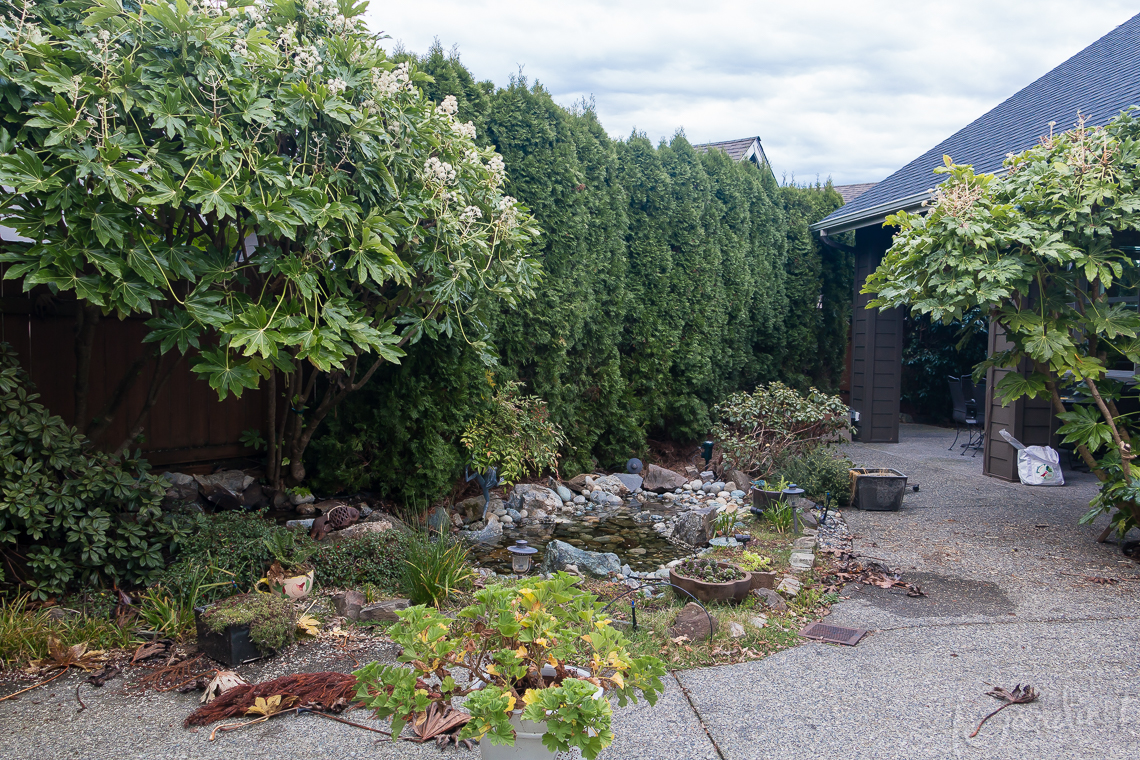Garden Screen Solutions

We all want to hide something whether it's the neighbors or the trash cans, but before you rush off to the nearest box store for a generic screen – or plant a row of arborvitae ask yourself a few key questions:
1. How high does the screen need to be?
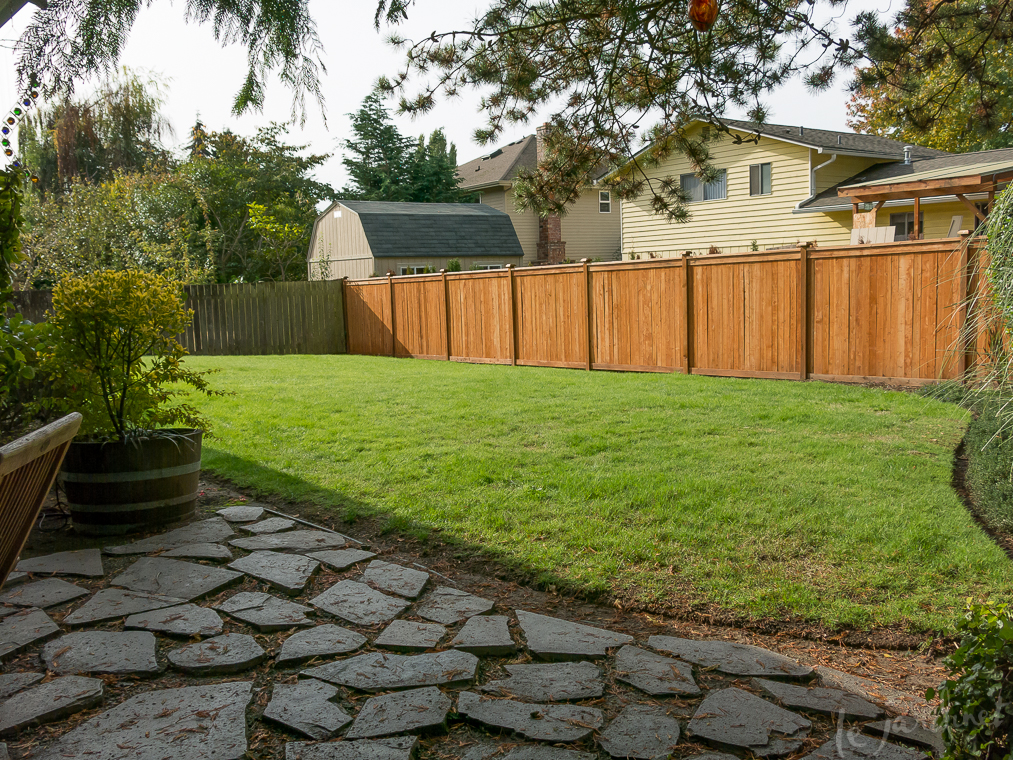
BEFORE: the homeowners wanted a row of bamboo to hide their neighbors after mature trees were removed. I had other ideas!
Is this viewed from inside your home? From a sitting position on your patio? From an elevated deck? Are your trying to hide your neighbors batting cage or just an A/C unit? Get someone to help you assess the needed height. We often use a long piece of metal marked off in increments. (A piece of lumber or bamboo cane would work just as well) One of us will hold that in front of the offending view while the other sits or stands in the prime viewing spot in order to determine just how tall that screen needs to be. Don't guess!

AFTER: to meet the homeowners requirement for instant, total screening, we interspersed 12' tall arborvitae with several standard laurels and layered in columnar Armstrong maples that provided height but didn't obstruct the paths. In front of these are Quickfire hydrangeas, smoke bushes and other shrubs for color and texture. Neighbors? What neighbors?
You can read more about the above transformation here.
2. Is screening needed year round or just in summer?
Is this a problem just when you are outside enjoying your patio in summer months, or is it an eyesore year-round? If you are desperate for year-round screening I understand the urge for an instant solution and why those ubiquitous arborvitae are so often used. Here's why they are not always a good idea:
A solid green wall can feel like a prison, especially in a small space. In the example above the solid, arborvitae hedge casts significant shade into the homes interior, provides no seasonal interest and due to the congested roots makes it almost impossible to plant anything else in that area to brighten things up.
Designing the Perfect Screen
With the answers to those two questions in hand you're ready to come up with the perfect solution. There are three possible approaches:
- Completely hidden
- Filtered view
- Distraction tactics
and each of the above can be achieved by using plants or building some sort of structure.
Tall Screens using Plants

Show gardens can be great places to glean ideas. I loved the combination of evergreen jasmine and textured woven fencing panels that provided privacy for this patio garden. RHS Hampton Court Flower Festival 2023
If you need something taller than a standard 6-foot-high fence consider tall, columnar trees, either evergreen or deciduous. Tall evergreens, for year-round screening include both conifers and broadleaf species. This earlier blog post covers a few great examples of conifers that fit the bill. Although it's tempting to plant these as large as you can find, do realize that smaller plants are much easier to establish and that regular watering will be essential for the first few years even if the trees will ultimately be drought tolerant.
Is there already a fence in the area? If so, planting a columnar evergreen directly in front of that simply doubles up the opacity for the lower 6 feet. Consider instead something which can be limbed up, or has a trunk to the height of the fence, with the canopy above that. For evergreens think perhaps of camellia, rhododendron or evergreen magnolia. Even without a fence, a mix of plantings can filter views.

This beautiful New Jersey home felt exposed to the street and a fence was not an option. A layered combination of trees, shrubs and perennials provided filtered screening that still felt friendly. Design by Susan Cohan Gardens
If only seasonal screening is needed I always recommend deciduous trees in front of such fences so that these can be underplanted with an assortment of interesting shrubs and perennials creating a multi layered effect.
A common mistake is planting a row of uniform trees (often conifers) in front of something to hide it. In fact that solid evergreen wall draws attention to the area and fills the area with roots in such a way that its impossible to incorporate additional shrubs. Likewise planting a columnar evergreen in front of a utility pole will simply draw the eye to the pole itself. A better solution is to plant a specimen tree off to one side. Distraction works like a charm, although I have seen wisteria trained to clamber up a utility pole very effectively.

Wisteria frutescens 'Amethyst Falls' scrambles up a utility home in this Michigan garden designed by Arcadia Gardens LLC
My favorite solution, however, is to plant a mixed, layered hedge of evergreen and deciduous species, underplanted with evergreen and deciduous shrubs and perhaps a few choice perennials tucked in for seasonal color.
Shorter Screens using Plants
A/C units, propane tanks, garbage cans, utility meters – these rarely need more than a 4-foor-high screen but are more likely to need to be evergreen. This blog post featured several good contenders that were suitably slim but of appropriate height.
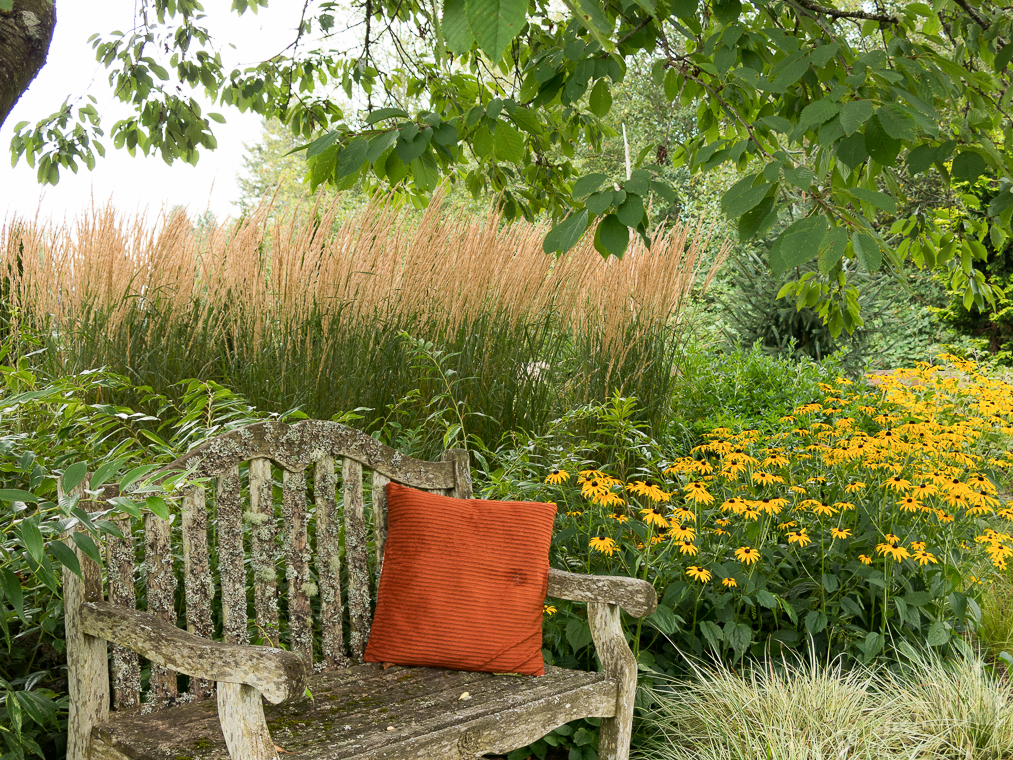
Tall, vertical grasses can provide seasonal screening, movement and sound all at the same time! Here Karl Foerster feather reed grass creates a backdrop to a private seating area in a charming Woodinville, WA garden.
For A/C units do check the manufacturer recommendations. Air flow is needed for these units to function properly so heed the recommended distance for planting.
You might also consider rambling roses or espaliered fruit trees as seasonal screens – perhaps outdoor room dividers.

A seasonal room divider at Newby Hall, Yorkshire, England. Espaliered fruit trees add height without width while a carpet of diminutive daisies (Erigeron k. 'Profusion') provides a final flourish.
Structural Screens

The open latticework of this screen ensures the A/C unit will still function correctly in this newly constructed garden
Sometimes it isn't possible to use plants for screening or it simply isn't the best design solution. In this case consider a decorative screen at the appropriate height instead. Besides traditional lattice, laser cut metal or composite panels are now widely available in a fun range of patterns, colors and finishes. These can be stacked, framed, hinged or inset into other structures. They can become a beautiful focal point that enhances your garden and view, rather than simply hiding something unattractive. Some products to research include Parasoleil, Modinex, and Veradek. These decorative panels could also be used to screen your neighbors from the porch or deck by attaching them to a railing. Suddenly it becomes hanging art – not a screen.

Incorporating architectural salvage into a custom wood frame resulted in a beautiful focal point as well as a subtle screen
You could also design your screen to incorporate architectural salvage, colored glass or custom art. Perhaps add a pergola top for growing vines or leave it clean-lined and contemporary.
Or combine it with a chalkboard for the kids?
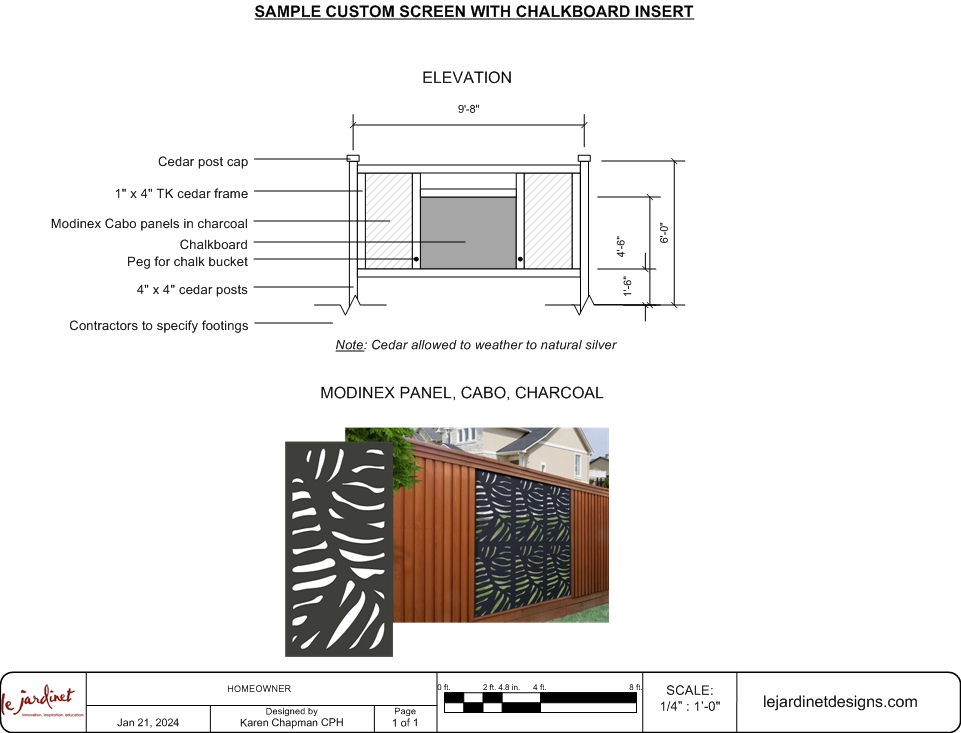
This conceptual design combines Modinex panels that are readily available, standard lumber and a chalkboard – anyone with basic woodworking skills could create this and adapt it. I'd probably add additional supports to the ground either side of the chalkboard for structural integrity on reflection. You could easily adjust the final height or width.
Get Creative
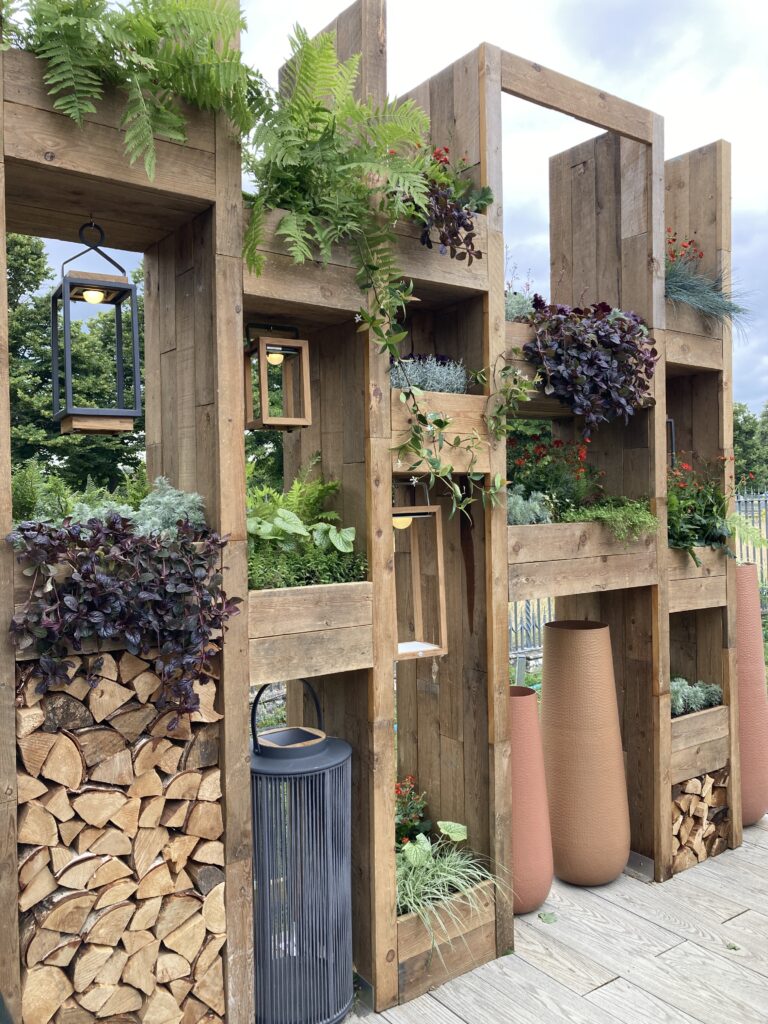
A great idea spotted at the RHS Hampton Court Flower Festival. This room divider could be adapted for indoor or outdoor use and incorporate found objects such as driftwood or fossils or perhaps a collection such as vintage watering cans or terracotta pots
Maybe that eyesore is actually an opportunity to create something beautiful? Do share any before/after examples you might have done – I'd love to be inspired by your creativity.
Subscribe to Receive Blog Posts
Gardening inspiration delivered right to your inbox from Le Jardinet
